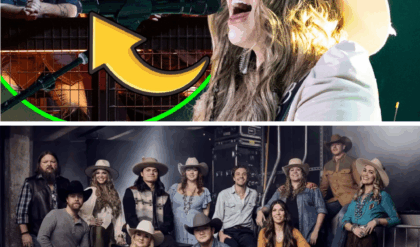In the ever-evolving landscape of horror cinema, where ghosts of the past refuse to stay buried, Amazon MGM Studios has ignited fresh terror with the announcement of a bold reimagining of The Amityville Horror. Unveiled just last week on September 9, 2025, this latest incarnation of the infamous haunted house saga is poised to haunt theaters by 2027, helmed by none other than David F. Sandberg, the Swedish maestro behind the pulse-pounding 2016 hit Lights Out. As whispers of demonic forces and family nightmares echo through Hollywood, fans of supernatural chills are already buzzing about what promises to be a spine-tingling revival of one of horror’s most enduring legends. This isn’t just another sequel in a franchise that’s spawned over two dozen films—it’s a fresh descent into the abyss, blending psychological dread with visceral scares that could redefine the genre for a new generation.
The Amityville story, rooted in one of America’s most notorious real-life hauntings, has captivated and terrified audiences for nearly five decades. It all began in the quiet suburb of Amityville, Long Island, New York, on November 13, 1974, when Ronald DeFeo Jr., then 23, gunned down his entire family—his parents and four siblings—in their colonial home at 112 Ocean Avenue. The motive? A chilling claim of voices commanding him to kill. Just over a year later, in December 1975, the house was sold to George and Kathy Lutz, a young couple with three children, who moved in seeking the American dream. What they found instead was a waking nightmare: swarms of flies in winter, walls oozing slime, levitating beds, and a pervasive sense of malevolent evil that drove them to flee after only 28 days. The Lutzes’ account, immortalized in Jay Anson’s 1977 bestselling book The Amityville Horror, became the blueprint for a multimedia empire, inspiring everything from films and TV specials to novels and even video games. Skeptics dismissed it as a hoax, but believers point to the DeFeo murders as undeniable proof of the house’s cursed legacy—a Dutch Colonial built in 1925, now forever synonymous with demonic possession.
Hollywood wasted no time capitalizing on the frenzy. The franchise kicked off with the 1979 blockbuster The Amityville Horror, directed by Stuart Rosenberg and starring James Brolin as George Lutz and Margot Kidder as Kathy. With its groundbreaking practical effects—like the infamous red-eyed pigs at the windows—and a score that still sends shivers down spines, the film grossed over $107 million worldwide on a modest budget, making it one of the highest-grossing horror movies of its era. It captured the raw terror of a family unraveling under supernatural assault, blending documentary-style realism with over-the-top hauntings that left audiences checking under their beds. The success spawned a sprawling, often chaotic series of sequels and spin-offs, each delving deeper into the house’s lore.
Amityville II: The Possession (1982), directed by Damiano Damiani, shifted focus to the DeFeo family, portraying Ronald’s rampage as the work of a demonic force in a prequel that introduced exorcism elements, starring James Olson and Burt Young. It was followed by Amityville 3-D (1983), a gimmicky thriller with Tony Roberts and Tess Harper, notable for its 3D effects but criticized for straying from the core story. The 1980s and ’90s saw a deluge of direct-to-video entries, like Amityville: The Evil Escapes (1989), which transplanted the horror to a lamp, and The Amityville Curse (1990), a loose anthology of ghostly tales. By the early 2000s, the franchise had ballooned to include oddities such as Amityville: Dollhouse (1996) and Amityville: A New Generation (1993), where the evil manifests in a mirror or artwork. Not all were connected canonically—some were standalone riffs on the theme—but they kept the Amityville name alive, churning out low-budget schlock that ranged from campy fun to outright forgettable.
The 21st century brought a glossy reboot with the 2005 remake of The Amityville Horror, directed by Andrew Douglas and starring Ryan Reynolds in a career-defining role as a increasingly unhinged George Lutz, alongside Melissa George. Produced by Michael Bay’s Platinum Dunes, it updated the scares with modern CGI, earning $108 million and revitalizing interest. Yet, the series’ quality remained inconsistent; 2017’s Amityville: The Awakening, a Blumhouse production directed by Franck Khalfoun with Bella Thorne and Jennifer Jason Leigh, delivered atmospheric tension but underperformed at the box office. More recent indies like Amityville: Where the Echo Lives (2023) and The Amityville Murders (2018), which dramatized the DeFeo killings with Diane Franklin, have kept the flame flickering on streaming platforms. With over 30 films bearing the Amityville moniker, the franchise has grossed hundreds of millions cumulatively, but it’s often derided for oversaturation. Enter Sandberg’s project: a deliberate reimagining that aims to strip away the excess and return to the heart-pounding essence of the original tale.
David F. Sandberg, the 44-year-old visionary from Jönköping, Sweden, is no stranger to crafting nightmares from the shadows. His journey into Hollywood began humbly with a series of no-budget short films uploaded to YouTube under the pseudonym “ponysmasher.” His 2013 short Lights Out, a mere six minutes of pure dread featuring a malevolent entity that vanishes when illuminated, went viral, amassing millions of views and catching the eye of Warner Bros. That led to his feature debut, the 2016 expansion Lights Out, which he both wrote and directed. Starring Teresa Palmer and Gabriel Bateman, the film turned a simple concept—fear of the dark personified—into a $150 million global smash, praised for its innovative sound design and relentless tension. Sandberg’s knack for blending everyday fears with supernatural horror shone through, earning him a Critics’ Choice nomination for directing.
He followed with Annabelle: Creation (2017), a prequel in The Conjuring universe that delved into the origins of the possessed doll, grossing over $306 million and solidifying his status as a horror heavyweight. Sandberg’s style—minimalist yet impactful, relying on practical effects, clever lighting, and emotional family dynamics—set him apart. Though he ventured into superhero territory with Shazam! (2019) and its 2023 sequel Shazam! Fury of the Gods, both playful DC entries that earned nearly $800 million combined, his heart remains in horror. Recent credits include directing episodes of Creepshow and the upcoming video game adaptation Until Dawn (2025), a Screen Gems project blending live-action with interactive elements. Now, with The Conjuring: Last Rites fresh off a $187 million haul earlier this year, Sandberg returns to his roots, partnering once again with producer Peter Safran of The Safran Company. “David has an unparalleled ability to make the ordinary terrifying,” Safran enthused in a statement following the announcement. “Amityville is the perfect canvas for his talents.”
The screenplay for this new Amityville Horror comes from the dynamic duo of Ian Goldberg and Richard Naing, whose recent collaboration on The Conjuring: Last Rites proved their prowess in weaving intricate supernatural narratives. Goldberg, known for co-creating The Dead and the Dark on Netflix and scripting The Autopsy of Jane Doe (2016), brings a sharp eye for psychological depth. Naing, his frequent partner, contributed to The Nun II (2023) and episodes of Fear the Walking Dead. Their script promises a faithful yet innovative take on Anson’s book, focusing on the Lutzes’ harrowing 28 days while incorporating modern sensibilities—perhaps exploring themes of trauma, skepticism in the social media age, or the blurred line between real hauntings and mental health struggles. Producers John Rickard and Sandberg himself join Safran, with executive producers Natalia Safran and Lotta Losten (Sandberg’s wife and frequent collaborator) ensuring a personal touch. Amazon MGM, fresh from hits like Saltburn and The Idea of You, sees this as a tentpole for their horror slate, leveraging streaming synergy for maximum reach.
Industry insiders are abuzz with excitement, viewing this as a potential game-changer for the beleaguered franchise. “After years of direct-to-video dreck, Amityville needs a prestige reboot,” one veteran producer told insiders. “Sandberg’s involvement elevates it from schlock to must-see.” Fan reactions online have been electric, with horror communities on Reddit and Twitter hailing it as “the glow-up Amityville deserves.” Memes comparing Sandberg’s shadow-play expertise to the house’s infamous “red room” have gone viral, while petitions for cameos from original cast descendants circulate. Even skeptics of the legend are intrigued, drawn by the promise of a film that might finally settle the debate: hoax or horror?
In a broader context, this revival taps into horror’s current renaissance. Post-pandemic, audiences crave escapist thrills grounded in “real” events, as seen in successes like The Conjuring series (over $2 billion grossed) and Hereditary. With streaming giants like Amazon MGM investing heavily—bolstered by the 2022 acquisition of MGM—expectations are sky-high. The 2027 release window aligns perfectly with Halloween seasons, positioning it against competitors like the next Exorcist installment. Casting rumors swirl: could a rising star like Anya Taylor-Joy play Kathy, or a method actor like Ryan Gosling channel George’s descent? While details remain under wraps, one thing’s certain—Sandberg’s vision will illuminate the darkness in ways that echo the original’s terror.
As production ramps up, perhaps scouting locations beyond the infamous (and long since demolished) Amityville house, the anticipation builds like a storm on the horizon. The Amityville Horror has haunted us for generations, but under Sandberg’s watchful eye, it might just possess our nightmares anew. Mark your calendars for 2027— the house on Ocean Avenue is calling, and this time, the lights might not save you.





